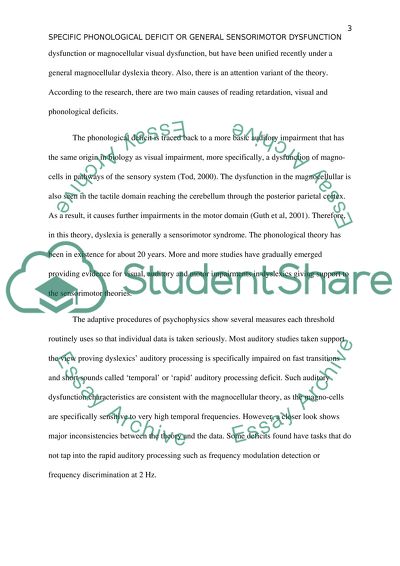Cite this document
(“Developmental dyslexia: specific phonological deficit or general Essay”, n.d.)
Developmental dyslexia: specific phonological deficit or general Essay. Retrieved from https://studentshare.org/psychology/1641824-developmental-dyslexia-specific-phonological-deficit-or-general-sensorimotor-dysfunction
Developmental dyslexia: specific phonological deficit or general Essay. Retrieved from https://studentshare.org/psychology/1641824-developmental-dyslexia-specific-phonological-deficit-or-general-sensorimotor-dysfunction
(Developmental Dyslexia: Specific Phonological Deficit or General Essay)
Developmental Dyslexia: Specific Phonological Deficit or General Essay. https://studentshare.org/psychology/1641824-developmental-dyslexia-specific-phonological-deficit-or-general-sensorimotor-dysfunction.
Developmental Dyslexia: Specific Phonological Deficit or General Essay. https://studentshare.org/psychology/1641824-developmental-dyslexia-specific-phonological-deficit-or-general-sensorimotor-dysfunction.
“Developmental Dyslexia: Specific Phonological Deficit or General Essay”, n.d. https://studentshare.org/psychology/1641824-developmental-dyslexia-specific-phonological-deficit-or-general-sensorimotor-dysfunction.


